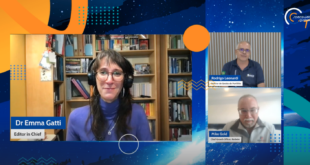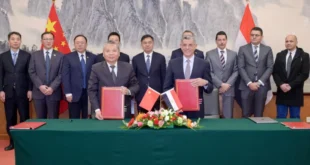by Blaine Curcio and Jean Deville
 As part of the partnership between SpaceWatch.Global and Orbital Gateway Consulting we have been granted permission to publish selected articles and texts. We are pleased to present “Dongfang Hour China Aerospace News Roundup 14 June – 20 June”.
As part of the partnership between SpaceWatch.Global and Orbital Gateway Consulting we have been granted permission to publish selected articles and texts. We are pleased to present “Dongfang Hour China Aerospace News Roundup 14 June – 20 June”.
Hello and welcome to another episode of the Dongfang Hour China Aero/Space News Roundup! A special shout-out to our friends at GoTaikonauts!, and at SpaceWatch.Global, both excellent sources of space industry news. In particular, we suggest checking out GoTaikonauts! long-form China reporting, as well as the Space Cafe series from SpaceWatch.Global. Without further ado, the news update from the week of 14 June – 20 June 2021.
This week, we will only cover two stories in more detail, because they are both pretty beastly stories. A kind reminder that we cover a lot more stories every week in the DFH Newsletter. For more fast-takes on the sector, sign up here.
1) Shenzhou-12 Crewed Launch
Jean’s Take
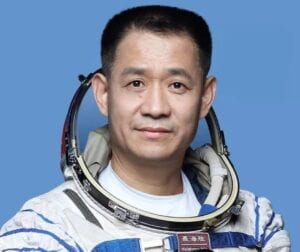
On June 17, the Shenzhou-12 crewed mission was successfully launched into space at 9:22am, Beijing time, by a Long March 2F rocket. The China Manned Space Engineering Office had announced the exact time of the launch on June 16. On-board was a team of three taikonauts, composed of Nie Haisheng (mission commander), Liu Boming and Tang Hongbo (photos available in the linked article), and the spacecraft was sent to the Tianhe core module of the Chinese space station. It is Nie Haisheng’s third time and Liu Boming’s second time in space, while it will be the first time for the younger Tang Hongbo. The three back-up taikonauts were Zhai Zhigang, Wang Yaping and Ye Guangfu.
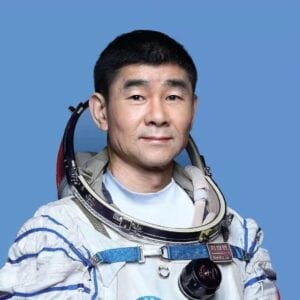
Now let’s talk a little about the rocket and spacecraft that enabled this Shenzhou-12 mission. The spacecraft was the Shenzhou crewed spacecraft, China’s main workhorse for sending taikonauts into space. This is an older generation spacecraft, first launched (in a prototype version) as early as 1999. It is composed of 3 parts:
- The propulsion module: which houses the orbit and attitude control engines. It has a diameter of 2.8 m, fitting easily into the Long March 2F’s fairings which have a diameter of 3.8 meters. This enables the propulsion module to fit a number of systems on the outside wall, notably the solar arrays and the TT&C communications systems.
- A return capsule: which is shaped like a blunt body similar to the Soyuz and Apollo capsules. This is a classic shape which is designed to decrease the amount of heating experienced by the capsule during reentry. It enters the atmosphere in a semi-ballistic trajectory, meaning that the capsule does produce some lift, and this enables the taikonauts to experience accelerations limited to 5G instead of 8G had the trajectory been ballistic.
- An orbital module holds the docking system. It is also able to hold 300 kg of cargo to supply the Chinese space station, and can also be filled with waste before getting deorbited.
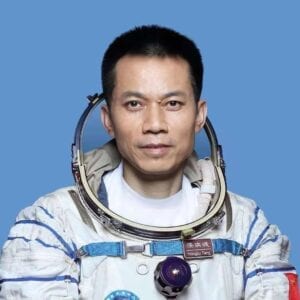
Shenzhou 12, as its name suggests, is the 12th Shenzhou spacecraft and mission. There have been some slight changes between the early versions of Shenzhou and the current version. Notably:
- the orbital module which used to host solar arrays, no longer has them.
- The docking mechanism has been upgraded to sustain the energy linked to docking with an 180t full-fledged space station (as opposed to the previous docking to the 8t Tiangong stations).
- Another upgrade was in the rendez-vous strategy: previously ground control was necessary for the approach phase between Shenzhou and the space station. Due to the now complete Beidou constellation, it’s been reported that the rendez-vous with the Tianhe core module is now entirely autonomous (although the taikonauts can resume manual controls if necessary).
- And finally, the latest version of the Shenzhou return capsule now has a new silvery coating which protects it further from the harsh environment of space. It reduces thermal conductivity, reflects sunlight better, and is able to better resist certain radiations from the sun.
The rocket launching the Shenzhou-12 is the Long March 2F, also an older generation rocket, also designed back in the day in the 1990s specifically to launch the Shenzhou spacecraft. Being the only crew launching rocket in China so far, it has some interesting features worth mentioning:
- General data: lift-off weight of 497 tons, it is 58m tall, has a payload capacity of about 8 tons, and is composed of a core stage with 4 strap-on boosters. The fairing has a max diameter of 3.8 m, which is ideal for the Shenzhou spacecraft which has a max diameter below 3m.
- The rocket itself is old technology: it first flew in November 1999, but it’s actually derived from the Long March 2E, which was an extended, heavy version of the Long March 2 developed in the late 1980s and launched for the first time in 1990. The most visible sign of its age is the use of UDMH and Nitrogen Tetroxyde as fuel and oxidizer; a hypergolic combination which has lost the favor of modern rocket design due to its toxicity. This is a legacy of China back in the day developing rockets based on missile design, which required storable fuels (which is THE main advantage of UDMH/NTO).
- The core stage and all 4 strap-on boosters of the Long March 2F use YF-20B engines, which use these propellants in a gas generator cycle.
The second stage uses a variant, the YF-24, which is actually a YF-22 main engine combined with 4 YF-23 vernier engines that enable attitude control and speed adjustments. - One very noticeable feature which distinguishes the Long March 2F from all other Long March rockets is the escape tower, which has the role of pulling the taikonauts to safety if something goes wrong with the rocket. This can happen anytime between 15 minutes before launch until up to 120s after launch (or to an altitude of 40 km). It is composed of 6 solid rocket engines using multiple nozzles: 1) main engine which pulls the taikonauts to safety in the case of an emergency 2) the separation engines which separates the tower from the rest of the upper stage if the launch goes well, 3) attitude control engines. There are also some grid fins to control the stability of the tower in case an escape plan is activated during flight
Back to the launch in itself, At 3:54 pm Chinese time, 6 hours and 32 minutes after the launch, Shenzhou 12 docked successfully with the forward docking hub of the Tianhe core module. — Once the docking was complete, the Shenzhou spacecraft stopped performing attitude control and broadcasting telemetry information: this role was taken over by the Tianhe core module. The air pressure was then equalized between Shenzhou and Tianhe, the connection is checked for leaks, and only after this is validated can the taikonauts open the hatch and enter the core module. Interestingly, the hatch is not closed once the taikonauts pass through, and the Shenzhou spacecraft is able to serve as a storage area for the space station.
In a press conference, CMSEO revealed a couple days ago that there will be four main tasks the current crew of taikonauts to Tianhe:
- Verification and operation of all Tianhe core systems and their interactions: the orbit control systems, life support systems, materials & waste management systems, and the robotic arm notably.
- Engage in extravehicular activity (EVA): this does not come as a surprise since 2 Feitian EVA suits were delivered a couple weeks prior in the Tianzhou-2 cargo supply spacecraft as reported a couple weeks ago. We can probably expect a series of very spectacular pictures from EVA.
- Daily exercise and health monitoring to stay fit.
- Carry out scientific experiments, notably spacetech and medical, as well as space education experiments.
Blaine’s Take
The China Aerospace Science and Technology Corporation has even released a detailed description of the space station. The article first noted that CASC was the developer for the Space Station, Shenzhou and Tianzhou series spacecraft, and the Long March rockets that were used to launch them. Which is to say, CASC is really, really significant in the context of the Chinese space program. I recall in 2019 having visited the SAST facilities in Shanghai, where they had two enormous test rooms for the docking technology used on the space station, one room for vertical testing and one for horizontal testing. Very impressive facility.
In terms of the current space station, the article first emphasized the degree of effort put into making it comfortable for taikonauts. In particular, a relatively large portion of the station is reserved for taikonauts’ living environment: from the 15m3 of Tiangong-1, the living environment is now a 110m3 space. To enhance the ‘humanization’ of the station, the living and working environments are clearly separate from one another. The living environment includes a sleeping area, a sanitary area, an exercise area, as well as a kitchen and a dining area.
A lot of effort has also been put into preserving the intimacy of taikonauts and enhancing their quality of life. Each taikonaut will have their own sleeping space, and will be able to sleep in an horizontal position. The cabin will also have WiFi network, and taikonauts are provided with a personal hand terminal which can control multiple features for their comfort like lighting directly in an APP. Additionally, they also have a dedicated private communication line for keeping in touch with their loved ones during their stay.
On the ground, CASC has built an identical replica of the space station that will enable the personnel on the ground to simulate the situation aboard the space station in case an unexpected event arises, thereby providing strong support to taikonauts.
It’s worth taking a step back and setting Shenzhou-12 into the context of what the Chinese call the construction period of the Chinese Space Station. China’s space station is supposed to be completed over a period of 2 years, in 2021 and 2022, and relying on 11 launches: 3 orbital modules (Tianhe core module, Wentian, Mengtian experimental modules), 4 Shenzhou missions and 4 Tianzhou missions. To this day, only the Tianhe core module is currently in orbit, as well as the Tianzhou cargo spacecraft launched in May and the current Shenzhou 12 spacecraft. This highlights the fact that we are only at 3 launches out of 11 at this stage. Additional Tianzhou and Shenzhou missions are expected in September and October this year, and the remaining 6 launches will take place in 2022. Busy times!
And the excitement is not limited to China: at a press conference on June 16th, China’s CMSEO announced that the country was looking to develop International collaboration over the Chinese space station. Notably, it was said that 9 projects from 17 countries had already been selected. It seems like China is very keen to give an international cooperation framework to its large-scale missions. And this extends to beyond LEO, doesn’t it?
2) China and Russia reveal a roadmap for International Lunar Research Station
Blaine’s Take
On the third day of the Global Space Exploration Conference 2021 taking place in St Petersburg from June 14 to June 18, China and Russia jointly revealed a roadmap for a future International Lunar Research Station (ILRS) dedicated to scientific research. Interesting video published by CNSA (in English), where they give homage to previous missions such as Apollo-11, but also mention that, “this time, we come with greater courage, stronger determination, and more ambitious goals, and we are no longer satisfied with simple visits, we are here for the long-term exploration”.
China and Russia had already announced their intention earlier this year (in March), with a signature of a Memorandum of Understanding, though as we noted at the time, MoUs have pretty limited meaning in terms of being legally binding, or even representing a project that is in a well-developed stage. The roadmap does, however, appear to be pretty well-defined, and the ILRS project seems to be picking up momentum. Although initiated by the CNSA and Roscosmos, the cooperation project is declared to be open to all interested international actors.
The ILRS project will be carried out in three phases: 1) Reconnaissance, 2) Construction and 3) Utilization.
- The Reconnaissance phase is supposed to last from 2021 to 2025. Both China and Russia will send 3 spacecraft to the Moon: Chang’e-4, 6 and 7 for China, and LUNA-25, 26 and 27 for Russia. The objective will be to perform “technology verification for secure high-precision soft landing”, as well as to select a site for the future ILRS. As China and Russia collect more data during this phase, it will also feed into decisions being made about the design of the ILRS. The Reconnaissance phase will primarily involve collecting a lot of different data about the moon, including remote sensing data, in-situ data collection (i.e. landers/rovers collecting data on the surface), and sample returns. Small note that Chang’e-4, included in the Reconnaissance Phase, was actually launched in 2018, quite a bit before the phase began.
In between the Reconnaissance Phase and the Construction Phase appears to be a several year gap (basically 2026-2029). The video released by CNSA notes that from 2026-2030, Chang’e-8 and Luna-28 missions will be dispatched to the Moon to conduct corroborative explorations, finish technology verifications of the ILRS.
- The objectives of the Construction phase, which should last from 2030 to 2035, will be to establish the in-orbit and surface facilities of the ILRS for research, exploration, and verification of in-situ utilization of resources, as well as infrastructural facilities for energy, communication and transportation services. Other objectives include the performance of “technology verification for the command center of ILRS”, the organization of lunar sample return and of massive-cargo delivery, as well as the start of joint operations. Several missions are already planned, including the Chang’E-8 and LUNA-28 missions, as well as ILRS-1, 2, 3, 4 and 5.
- The ILRS will include cislunar transportation facilities, long-term support facilities on lunar surface, lunar transportation and operation facilities, scientific facilities, as well as ground support and application facilities.
- Lastly, the Utilization phase should begin in 2036, with the objective of lunar research and exploration, technology verification, resource utilization, as well as the performance of human missions to the completed ILRS.
The overall scientific objectives include research on and exploration of lunar topography, geomorphology and geological structure, lunar physics and internal structure, lunar chemistry, cislunar space environment, lunar-based astronomical observation, lunar-based Earth observation, lunar-based biological and medical experiment, as well as lunar resources in-situ utilization. The roadmap also reveals cooperation opportunities for potential international partners.
Final point from my side is the extent to which this project is clearly aimed at being pretty international, but with China and Russia leading the way. Announcing it at a large, international conference with an English-language video and roadmap, and with the English language video going heavy on the “we develop this research base for peace and to inspire future generations all around the world”, is a pretty apparent message that the two countries seek to bring in international partners. As well, the scale and ambition of the project is certainly impressive, making it pretty appealing for other countries to get onboard, particularly given how very few other lunar research bases are planned in the coming decades.
Jean’s Take
Worth noting also, in the timeline that was presented at GLEX, crewed missions only take place starting from the so-called “Utilization” phase, after 2035, which is 10 years after the Artemis program achieves this, in theory.
It seems like the ILRS is increasingly looking like a full-fledged competitor to the US-led Artemis program, and it seems that participating countries are either in one project or another. We may see some exceptions:
- while Russia plays a leading role in ILRS, it might want to keep a minimal, but nonetheless non-zero effort in the Artemis program.
- Brazil, which recently signed the Artemis Accords and is aiming at taking an active role in the US-led program, also has had historically close ties in space with China (notably for the CBERS satellites), and may want to remain on both sides of the fence.
- Similarly, France’s CNES and Europe’s ESA, two historical partners of NASA, have also been quoted as being in discussion for the ILRS.
A relatively significant amount of documentation was released on the ILRS during the GLEX conference, which is a good point considering that a lot of the previously known information on the ILRS was very early stage proposals and only coming from Chinese sources. Now we have documents that are co-authored by both Roscosmos and CNSA.
Also, there was a further presentation by CALT on Earth-Mars missions. I haven’t had the time to go through them but SpaceNews journalist Andrew Jones was kind enough to post them on Twitter. There is mention of concepts like a nuclear-powered spacecraft, so definitely worth giving a read.
This has been another episode of the Dongfang Hour China Aero/Space News Roundup. If you’ve made it this far, we thank you for your kind attention, and look forward to seeing you next time! Until then, don’t forget to follow us on YouTube, Twitter, or LinkedIn, or your local podcast source.
Blaine Curcio has spent the past 10 years at the intersection of China and the space sector. Blaine has spent most of the past decade in China, including Hong Kong, Shenzhen, and Beijing, working as a consultant and analyst covering the space/satcom sector for companies including Euroconsult and Orbital Gateway Consulting. When not talking about China space, Blaine can be found reading about economics/finance, exploring cities, and taking photos.
Jean Deville is a graduate from ISAE, where he studied aerospace engineering and specialized in fluid dynamics. A long-time aerospace enthusiast and China watcher, Jean was previously based in Toulouse and Shenzhen, and is currently working in the aviation industry between Paris and Shanghai. He also writes on a regular basis in the China Aerospace Blog. Hobbies include hiking, astrophotography, plane spotting, as well as a soft spot for Hakka food and (some) Ningxia wines.
 SpaceWatch.Global An independent perspective on space
SpaceWatch.Global An independent perspective on space

